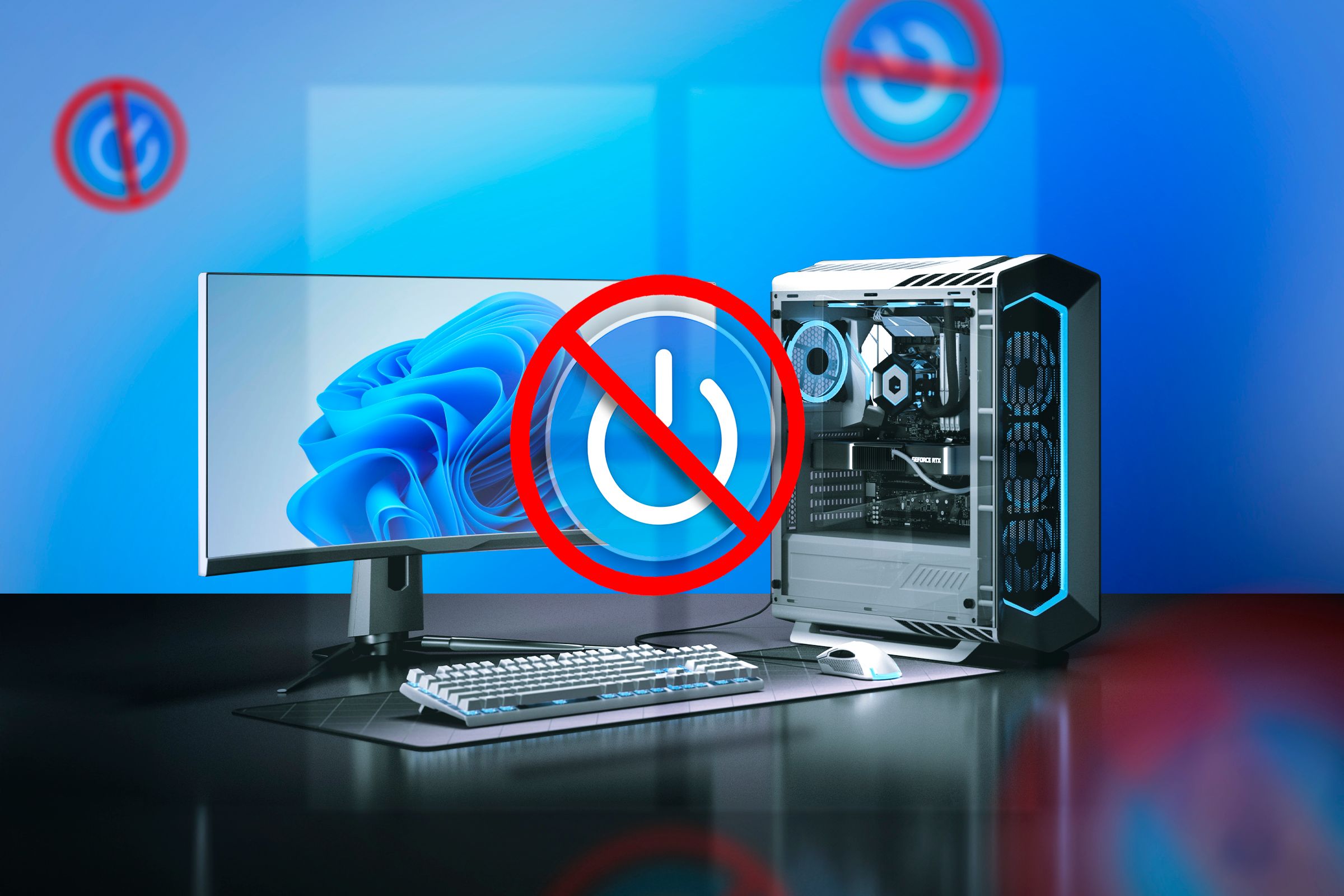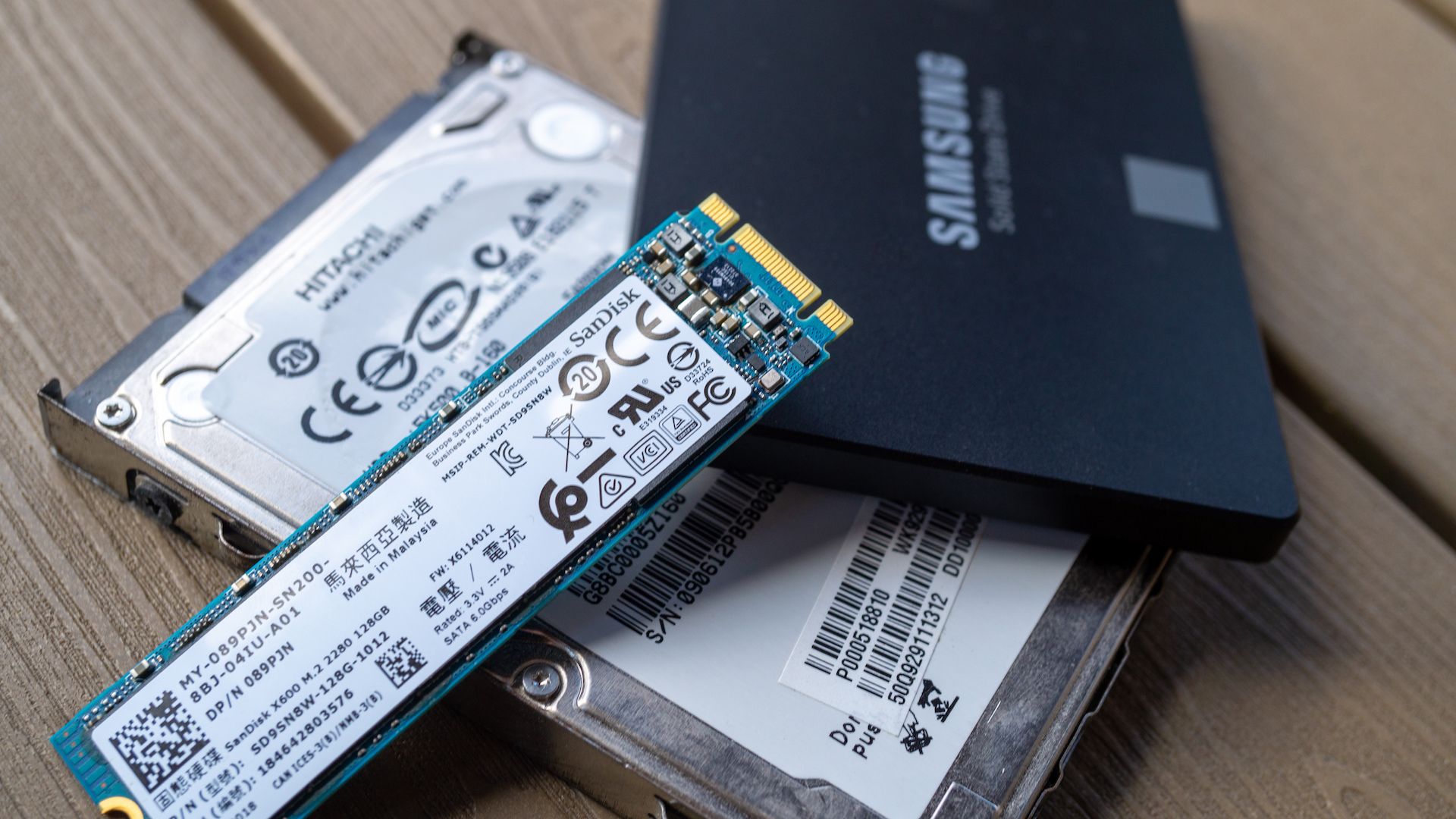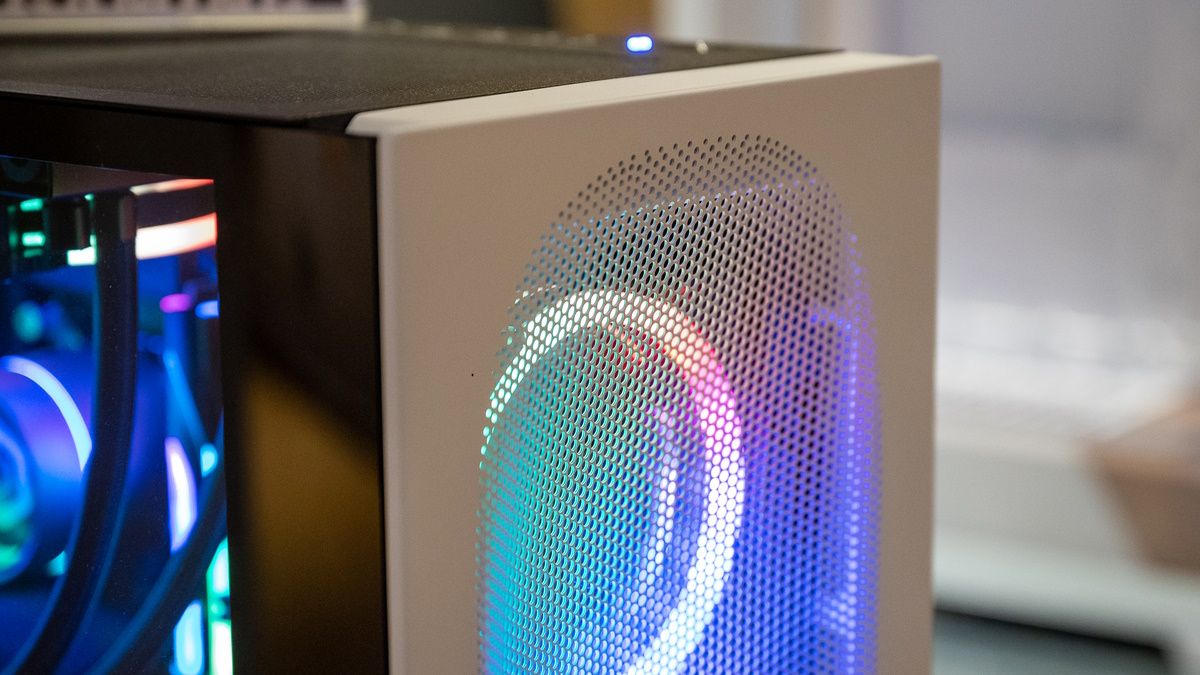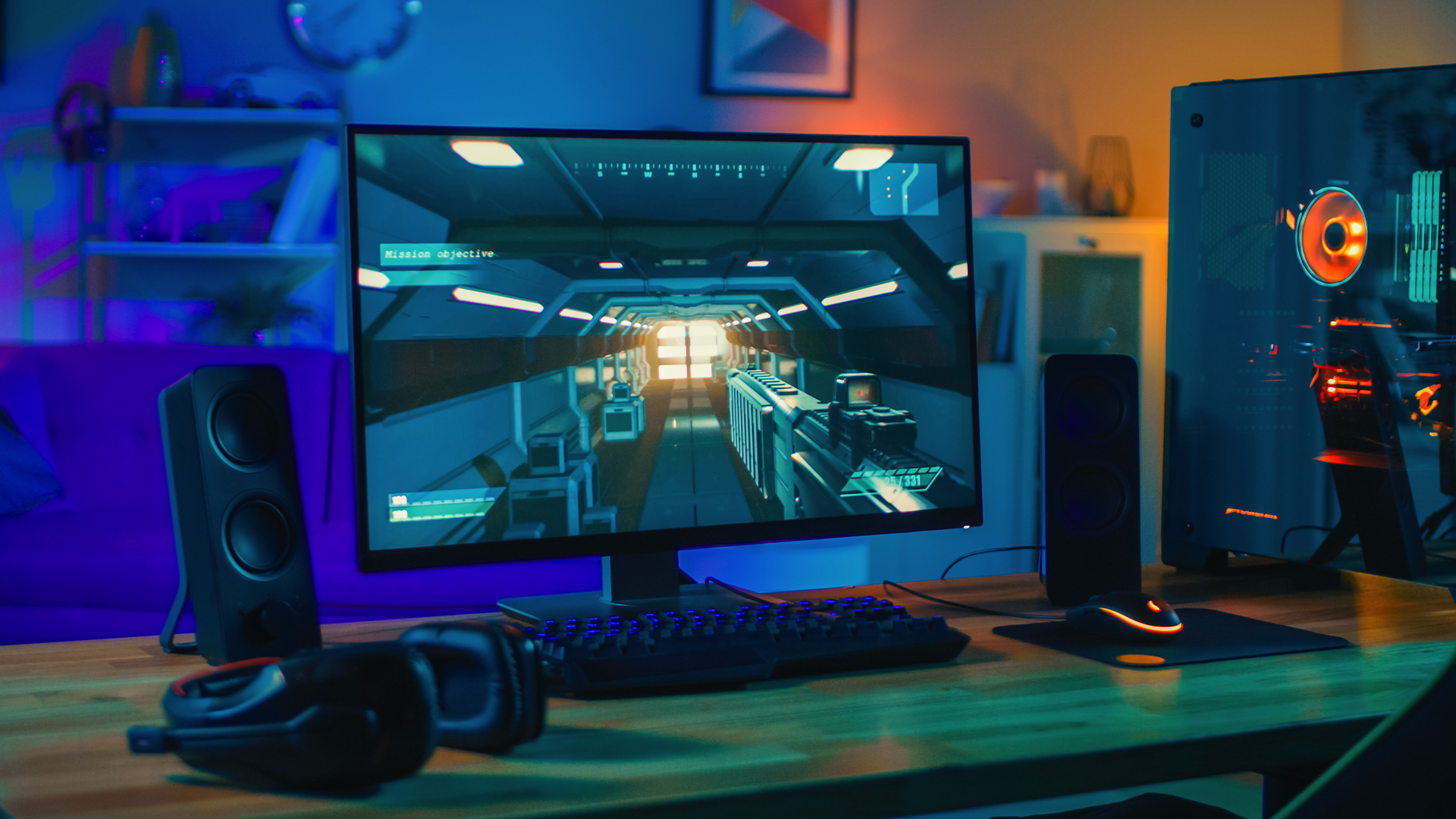Summary
- Leaving your PC on 24/7 only costs around $15 extra per year on a high-end system, and even less for lower-power machines.
- Productivity gains from leaving your PC on outweigh the potential cost savings.
- Modern SSDs aren’t as affected by wear from being powered on, making leaving your PC on more viable.
Do you shut your PC off or put it to sleep when leaving the office for the day? I stopped doing this years ago, and I’m never going back. Here’s why I leave my PC on 24/7/365, and why you should too.
I Used to Put My Computer to Sleep
I have never been part of the camp that shuts a computer all the way down. Even many years ago, when that was commonplace, I would only put my computer to sleep. I just simply never found a need to turn my computer all the way off.
There’s pros and cons to both methods, sure, but I just never felt like powering down was the right choice. My computer would wake from sleep decently fast and be ready to go with the programs I had opened before.
There was a slight delay as it woke up, but the programs were still there. Shutting my computer all the way off meant having to re-open programs from scratch the next day, which I always found annoying.
Many people I know still put their desktops to sleep. It’s just a common situation, however, it’s mostly founded in routine and not really “what’s best for the computer.” Most of the friends I know who still sleep their desktops do it because they’ve always done it, and it’s supposed to be better for the computer. These days, sleeping a system doesn’t actually improve much except power draw. A system put to sleep might drop to around ~5 to 10W of power draw from the wall. However, even a few years old i5 desktop only draws around 20W when idle (and not asleep), meaning you might not be saving all that much by sleeping your mid-range desktop after all.
Sleep is still better than hibernating your PC, as that adds extra wear to the SSD since the computer has to offload the current RAM to the SSD, and then re-write it to the RAM when it wakes back up from hibernation. Sleep leaves the RAM intact, allowing it to draw the minimum amount of power required to stay alive, making it a better option than hibernation if you had to pick one of the two.
With all that said, I just simply don’t find it beneficial to put my desktop to sleep, and I don’t think it’s nearly as efficient as it used to be, either.
When it comes to laptops, however, I put mine to sleep all the time. Whether it’s my MacBook Pro or my Windows laptop, both will be either put to sleep or shut off depending on how long I plan to not use it. Typically, I use sleep mode, but I do occasionally shut my Windows laptop off because it doesn’t play well with sleep. My Chromebook will suffer a similar fate of being put to sleep and rarely shut down.
These Days, I Just Leave My Desktop on 24/7
I can’t tell you the last time I turned my desktop off when I was done with the day, at least, not in my office.
I have multiple desktops at home. One is in my workshop, which runs my CNC and lasers, and the other is in my office that runs my day-to-day life and handles my PC gaming.
My shop PC I will sometimes turn off if my wife and I are leaving town for a week or two, but even then that’s a rare occurrence that I take the time to turn it off. My desktop in my office never gets shut down, however.
I’ve done the math, and it’s just not worth it. Where I live, power costs around $0.10 per kWh. My desktop, when running my day-to-day tasks, averages at around 80 to 100W of power usage. At idle? It draws around 30 to 50W. My PC is pretty beefy, too, with 32GB of DDR5 RAM, an i9-13900K processor, and an RTX 3080 12GB GPU. However, if you’re running a more moderately-specced system, like a newer i5 processor and 16GB of RAM, you’re talking a 10W or so power savings, as those systems will idle around 20W, and drop to around five to 10W when sleeping.
That means, if I shut my computer down for eight hours per night, after three days I’d save a whopping $0.12. A month of that is $1.20, and a year of it is $14.40. If you have an i5 desktop and plan to save 10 to 15W of power when shut down, that would mean you’d have to have your computer shut down for around 66 hours to save 1kWh, or $0.10 if your electricity cost is anything like mine. That equates to over a week’s time to save 1kWh, which means that a year of turning your PC off for eight hours per night would only save $2.92 if you paid $0.10 per kWh like I do.
Yes, over time that does add up, but the convenience of never having my computer off outweighs the $15 I’d save over a year. If it cost me under $3 per year to leave my computer on overnight, I wouldn’t even think twice about it.
For me, leaving my PC on or turning it off is more than just wondering how much power it takes. It’s primarily the productivity I gain or lose from it.
By leaving my PC on all the time, I can just hit any key on my keyboard and be ready to go. The computer is awake, my programs are launched, and whatever I was working on last is front-and-center. If there’s a Windows update, I’ll reboot the system at the end of the day for the update to apply overnight, and then I’m right back at it again the next day.
This means I can get right to work without any delay. If I was to turn my PC on, then I’d have to wait for it to boot, log in, wait for it to finish booting, then launch the apps I need. From there, I’d have to navigate to the pages I was at, wait for things to load, and it all just takes time.
The productivity that I gain from leaving my desktop on is worth the $0.12 per night I’d save by shutting it off. Even if it only adds 3 minutes to the start of my day, it’s not worth the pennies saved to me.

Related
You Should Leave Your PC on Too
At your job, I can totally get turning your PC off or putting it to sleep. When I worked for a cell phone repair company, I would put my company computer to sleep every day before I left the shop, and I’d wake it up the moment I got back in the next day.
As I had other things I could work on while the computer booted, the boot up time wasn’t as crucial for me. I can totally see that as a viable reason to put your computer to sleep. But, at home, I really think you should leave your PC on too.
If we rewind time, one of the primary reasons for turning a computer off was to save on wear and tear for the hard drive. With mechanical drives, that was a real concern. Older mechanical hard drives were typically rated for around 43,800 hours of use, which is five years of spinning.
Modern NVMe SSDs actually don’t have a big warning for power on hours. It’s a factor, but the real worry is TBW (or terabytes written). What wears out a modern SSD is purely writing and overwriting data, not simply being powered on.

Related
How to Check Your Hard Drive or SSD’s Health With S.M.A.R.T.
Your drives have a host of useful diagnostic data hidden away. Here’s how to read it.
Because of this, there really aren’t a ton of downsides to leaving your computer on 24/7, outside the power draw it pulls from the wall.
If you only touch your computer once or twice a week, then maybe put it to sleep or turn it off. If you use it daily, leave it on. See how it changes your workflow, not having to turn the computer on every time you walk into the office in the morning.






